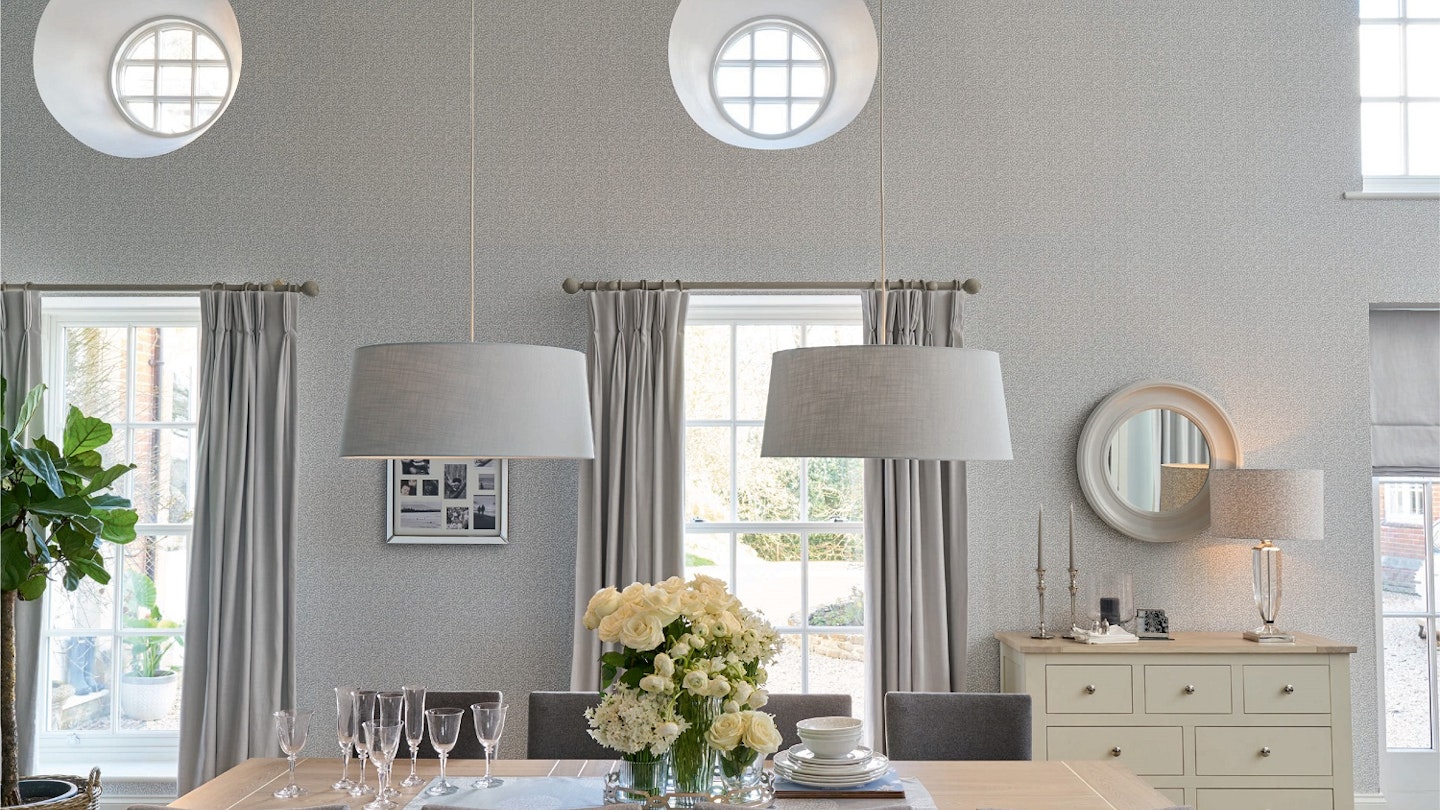You know you've officially reached adulthood when you find yourself poring over fabric swatches and considering the best type of curtain pole.
Curtains can have a dramatic impact upon the look and feel of your room, and they're arguably one of the most important interiors investments that you'll make when redecorating a home.
We asked the experts what you need to know when choosing, hanging and even making your own drapes...
Choosing your curtains: what you should know beforehand
Think about light: 'Your windows are the only source of natural light in your home, so it's really important to think about how much light your curtains will still let in when fully open,' says Elinor Pitt, co-founder of Stitched. 'Your style and where you choose to hang your curtains and blinds will have a massive impact on this.'
Consider pattern carefully: Though patterned fabrics are very much having a moment on Instagram right now, consider how long they’ll actually be on trend. ‘Patterned fabrics are lovely, but think about when you next plan on changing your curtains – it is no small task!’ says Elinor. ‘Plain fabrics can be more timeless in a home and serve as a wonderful backdrop – it can be more cost effective to keep up with changing trends and fashions by updating your cushions, throws and decorative accessories more regularly.’
Choosing the colour: There are three things to consider, according to Elinor. 'Your light levels, the view from your room and the saturation of your fabrics (bright versus pale tones).'
Measuring your windows: 'Measure the height of your window in a few places,' advises Elinor. 'Traditional English homes are all a bit wonky, so taking the longest length will make sure your curtains aren't too short at one end. Adding a bit of additional length to your curtains (known as pooling) can also be a great way of concealing this whilst also giving a tailored look.'
**Think about the purpose of the room: '**You may need to add blackout lining to your curtains and blinds if you struggle with excess light in the mornings or from street lamps at night,' adds Elinor.
Picking a fabric: Again, consider how you use this space. ‘For the dining and living areas, a more structured formal fabric like a woven jacquard or woven stripe will create drama,’ suggests Cathryn Archer, head of interior design service at Laura Ashley. ‘For a more casual look, go for a linen mix or a velvet that has natural qualities like shading variations, texture and natural slubs which are unique to the fabric.’
There are a number of practical points that you'll need to take into account, too. Cathryn recommends watching out for ‘vertical pattern repeat of the fabric designs, half drop repeats and atmospheric conditions – some fabrics can shrink and/or expand in various climates.’
Use swatches: You wouldn't decorate your room without stocking up on paint samples, so make sure to avail yourself of the fabric swatches that will be offered by all good material suppliers: it's important to see what your chosen fabric looks like in situ.
Hanging your curtains
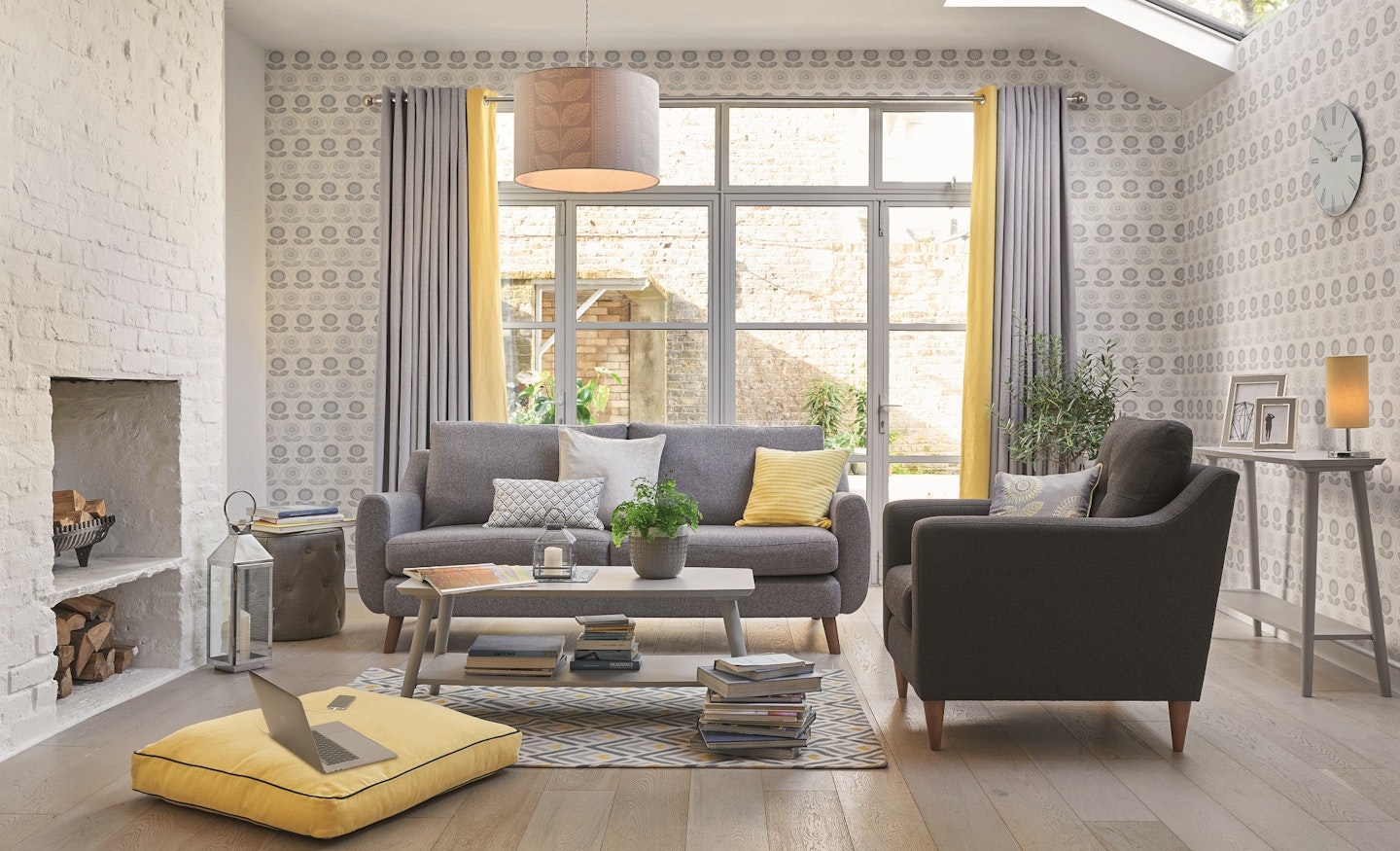
Choosing a pole: 'Your choice of pole may be determined by the weight of your fabric, and also by the overall look you plan to create,' advises Lucy Shore, Swish's creative designer. 'For mid-weight curtains, a 28mm diameter pole will be more than sufficient; however, for a light voile curtain, a 19mm pole is a more appropriate choice as it reflects the delicate nature of the fabric.'
For a more dramatic look, '35mm poles help make a statement around your window and work really well in larger spaces, where you may need to balance out the proportions of a room. Of course, they are also more suitable to take the weight of heavier curtains, such as wool or velvet.'
Making measurements: Don't fall into the trap of using a pole that's the same width as the window frame. 'It's really important to increase the length of your pole if you can,' says Elinor, 'as this means the curtains can stackback against the wall rather than in front of the window.'
Consider the wall type: 'Make sure you know whether your curtain pole will be going into brick, wood, plaster or metal, as this will affect the type of screws or fixtures that you will need to use,' says Elinor.
Wash your hands! Elinor recommends making sure your hands are clean before touching any fabrics, especially if they are light in colour. 'Putting up poles and tracks can be messy work from drilling into the wall,' she says. 'Make sure you have hoovered and wiped the area clean before you pick up your curtains to hang them.'
NOW READ: Pastel Living Room Ideas You'll Want To Recreate
Pastel Living Rooms - Grazia
 1 of 13
1 of 13pastel living room interiors inspiration
We're never sure exactly which colours the old adage refers to, but this set up proves that pink and green should definitely be seen together.
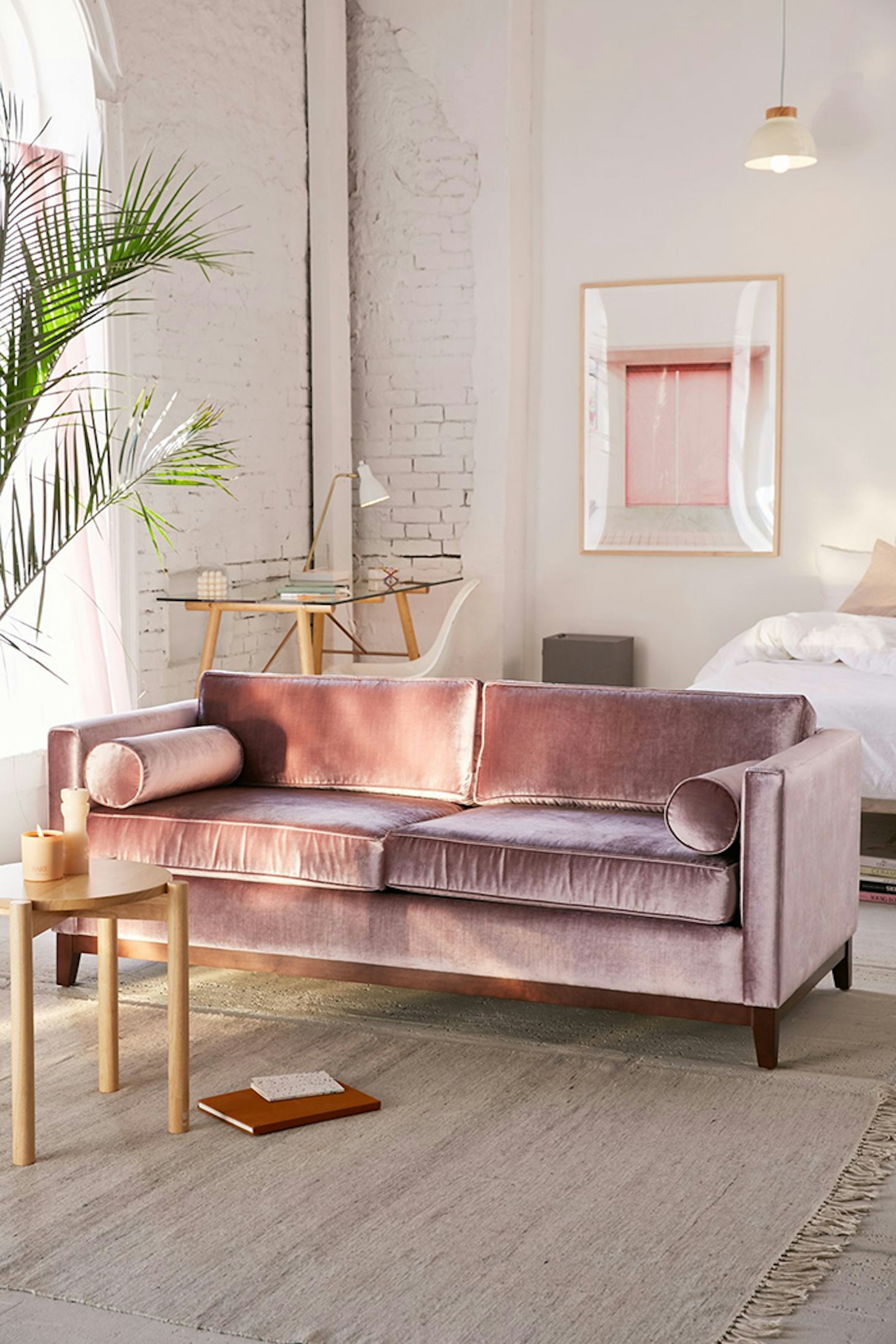 2 of 13
2 of 13pastel living room interiors inspiration
When did the pink velvet sofa become an interiors must have? We're not sure; we just know we need one ASAP.
 3 of 13
3 of 13pastel living room interiors inspiration
Pair two pastel shades together and the effect is unexpectedly maximalist (without leaving you with a headache).
 4 of 13
4 of 13pastel living room interiors inspiration
Forget magnolia, a lick of pale blue paint can help smaller rooms feel light and airy (plus, here's proof that it makes a very Instagram friendly backdrop for botanicals)
 5 of 13
5 of 13pastel living room interiors inspiration
Time to add a pastel-hued scallop seat to the top of your interiors wishlist.
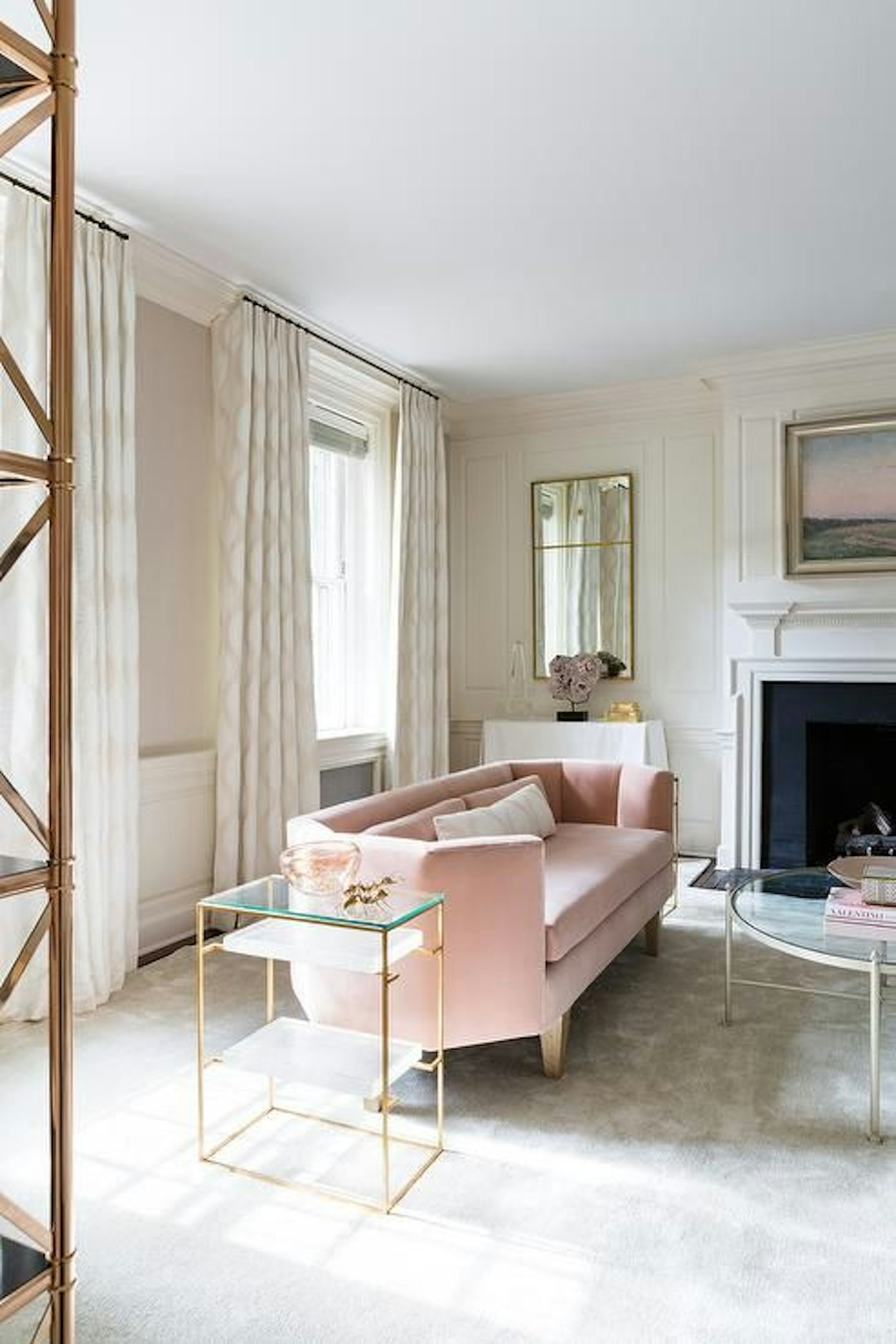 6 of 13
6 of 13pastel living room interiors inspiration
Shop around for accent accessories or prints in colours that subtly echo that of your statement piece of furniture.
 7 of 13
7 of 13pastel living room interiors inspiration
This cornflower shade makes a striking backdrop for a gallery wall, with pastel blue accents popping up in the picture selection, too.
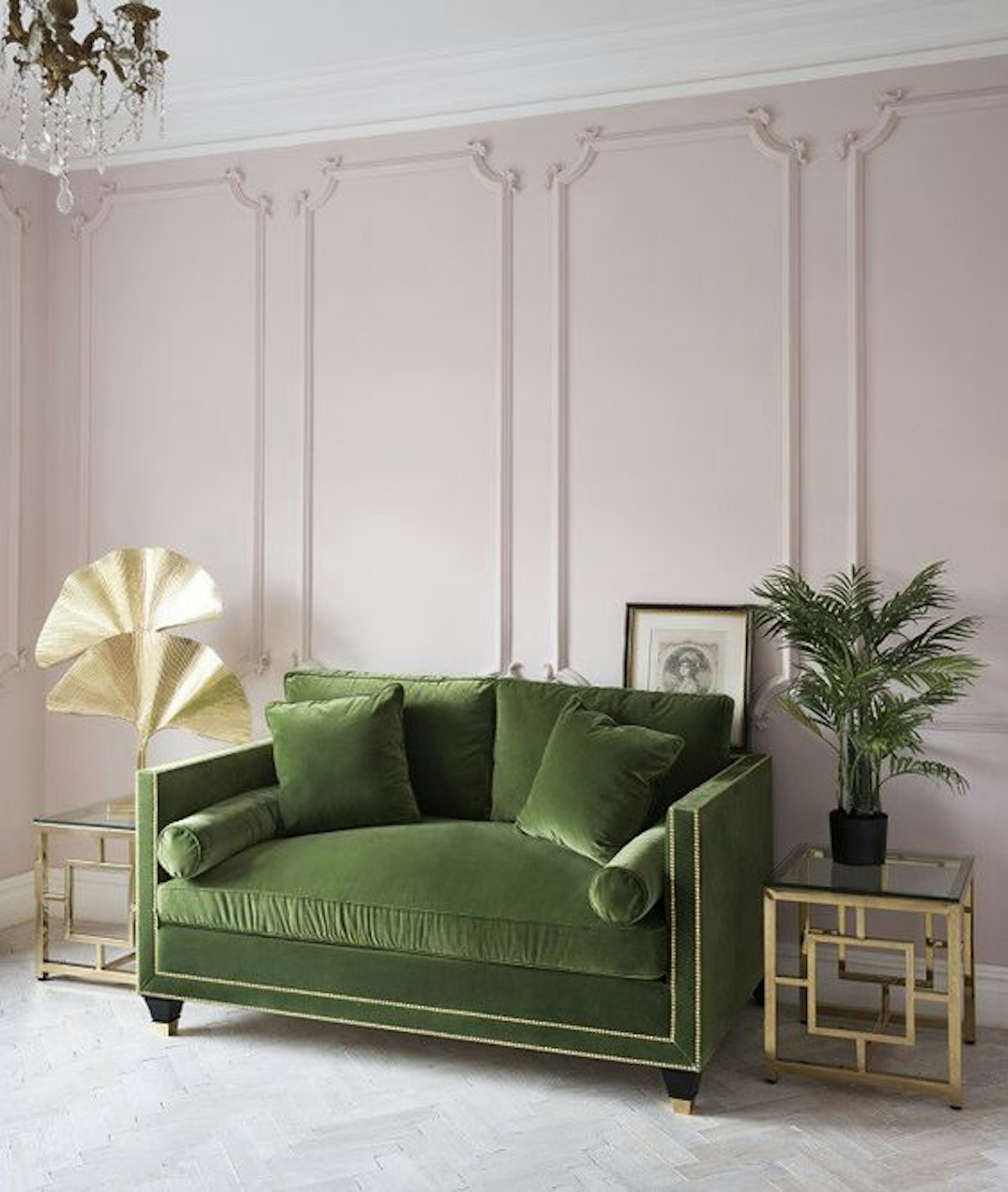 8 of 13
8 of 13pastel living room interiors inspiration
Yet more proof that pink and green is the dreamiest of colour combinations. Here, a pale backdrop keeps the deep olive sofa from feeling too heavy or old fashioned.
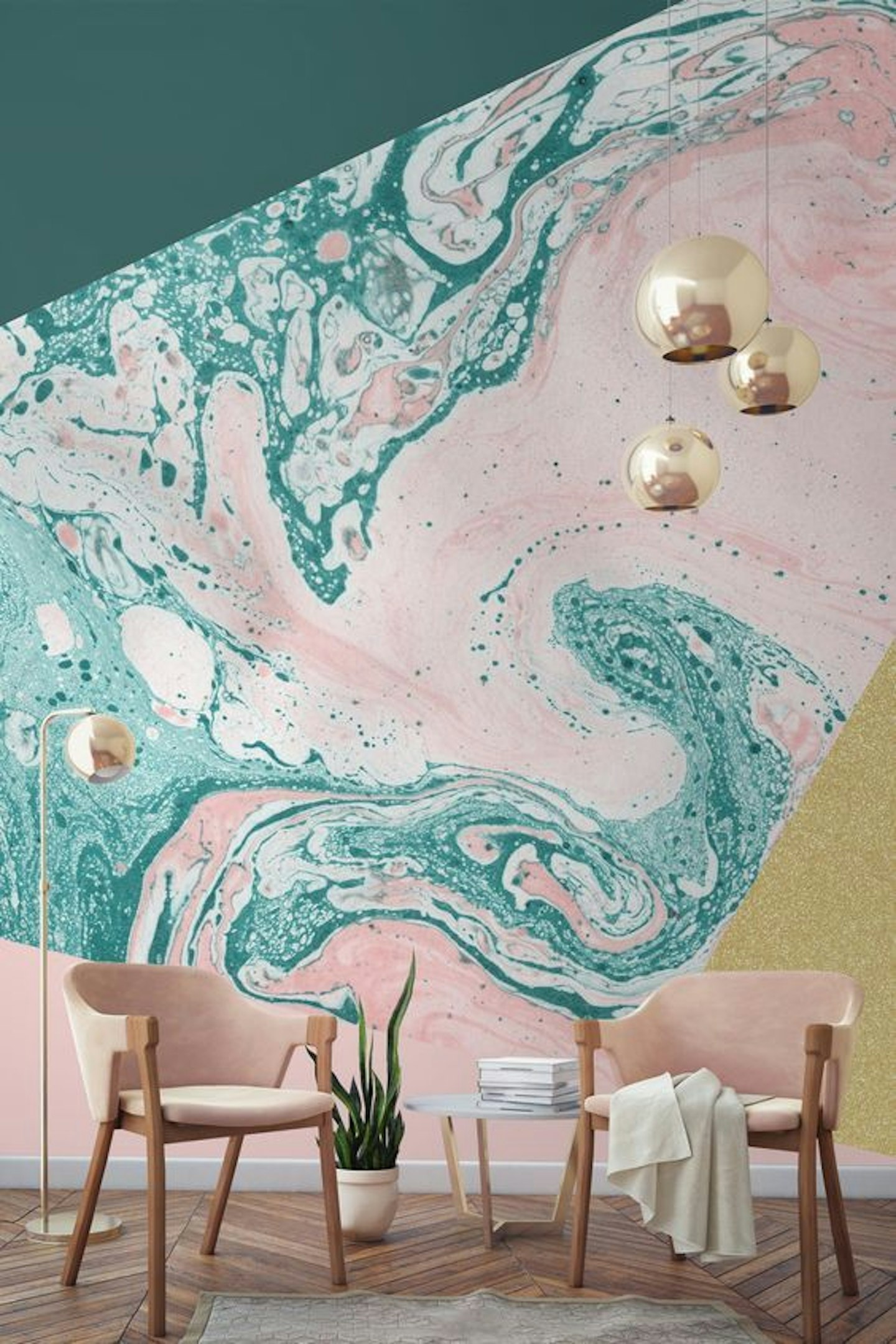 9 of 13
9 of 13pastel living room interiors inspiration
Balance out a dramatic print (like this statement-making marbled wallpaper) with simple, clean lines for furniture and lighting.
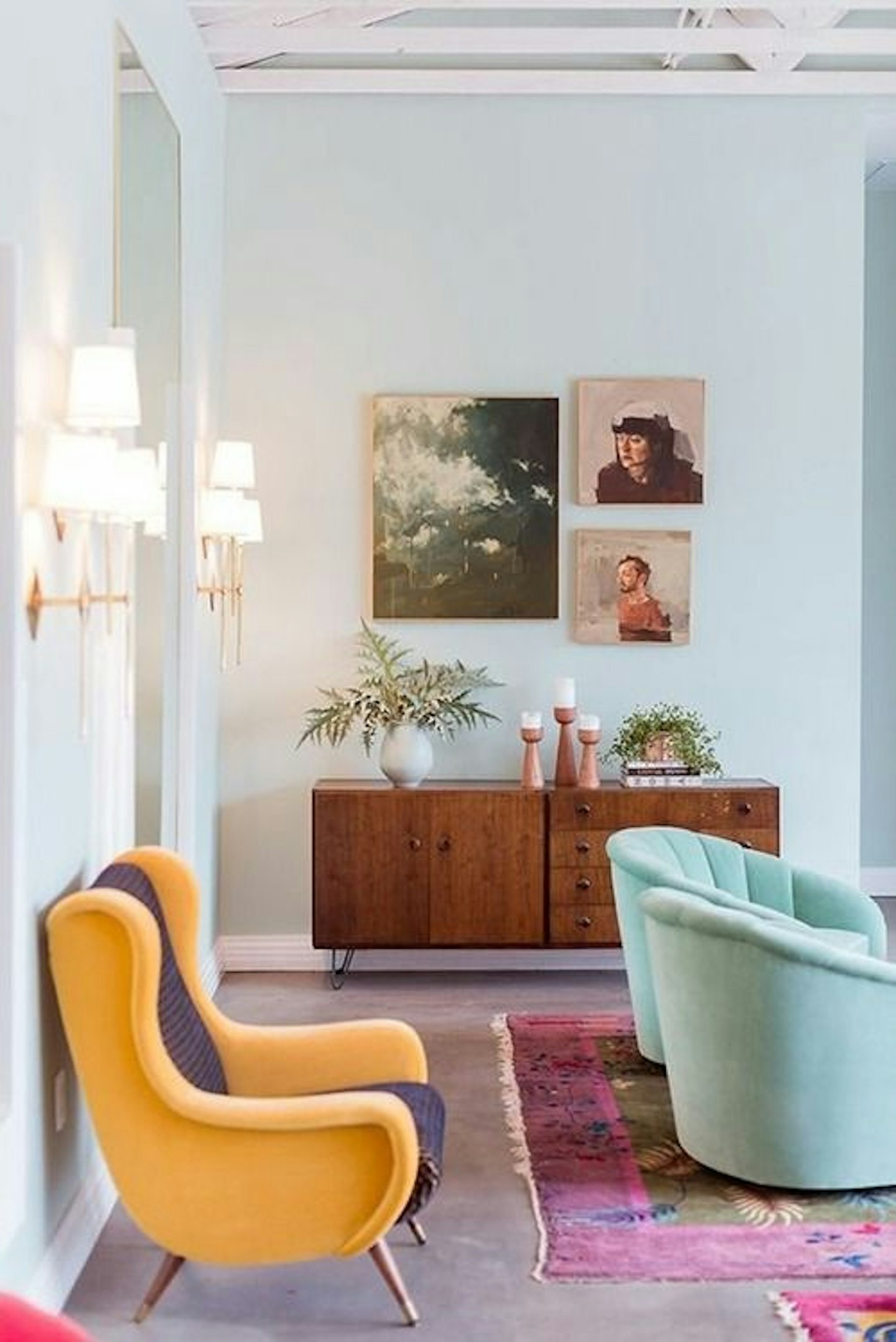 10 of 13
10 of 13pastel living room interiors inspiration
As great as pastel on pastel looks, don't be afraid of pairing lighter shades with bolder pieces like this yellow chair.
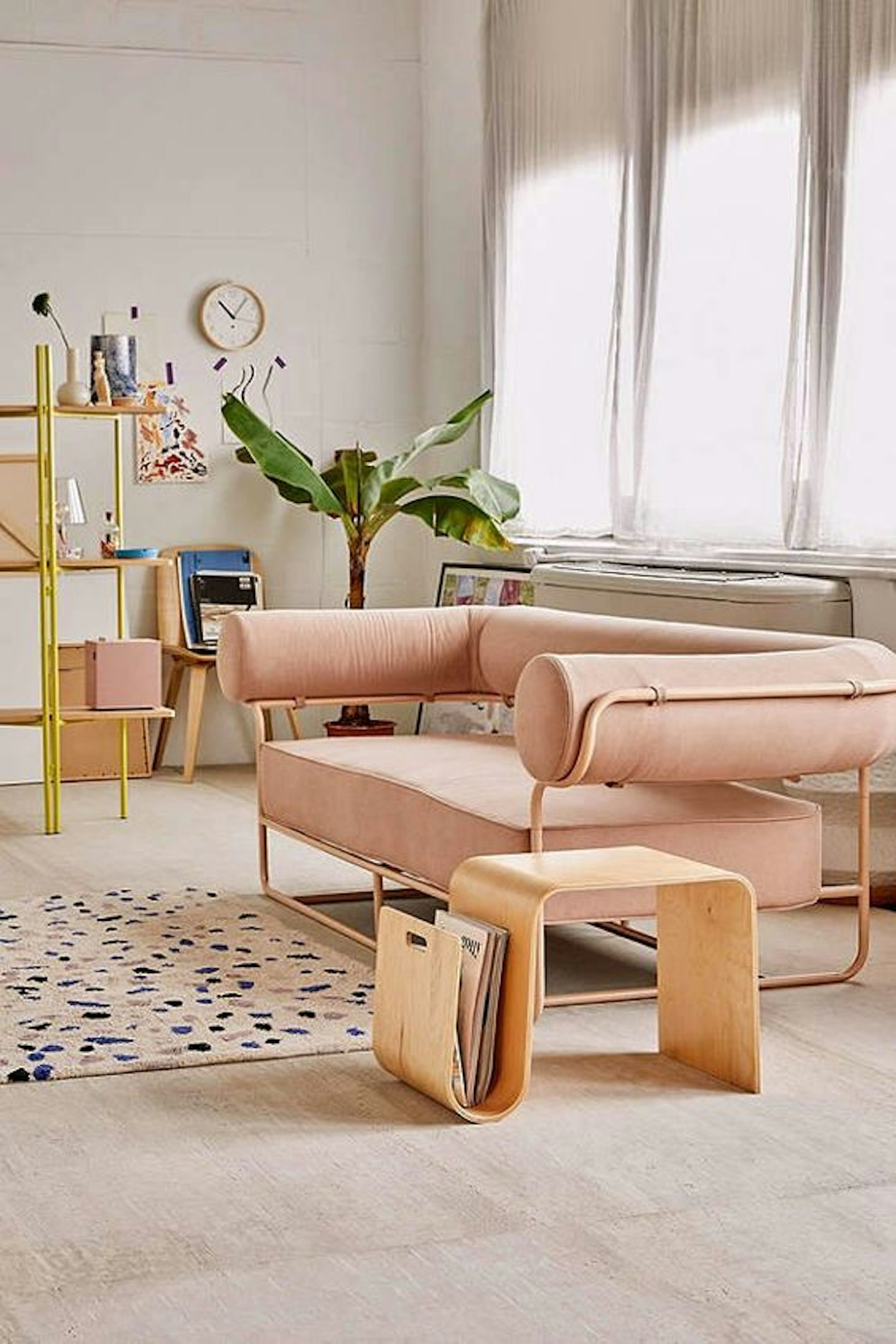 11 of 13
11 of 13pastel living room interiors inspiration
If a classic velvet sofa feels too traditional for your space, look out for pastel sofas in modern shapes like this one.
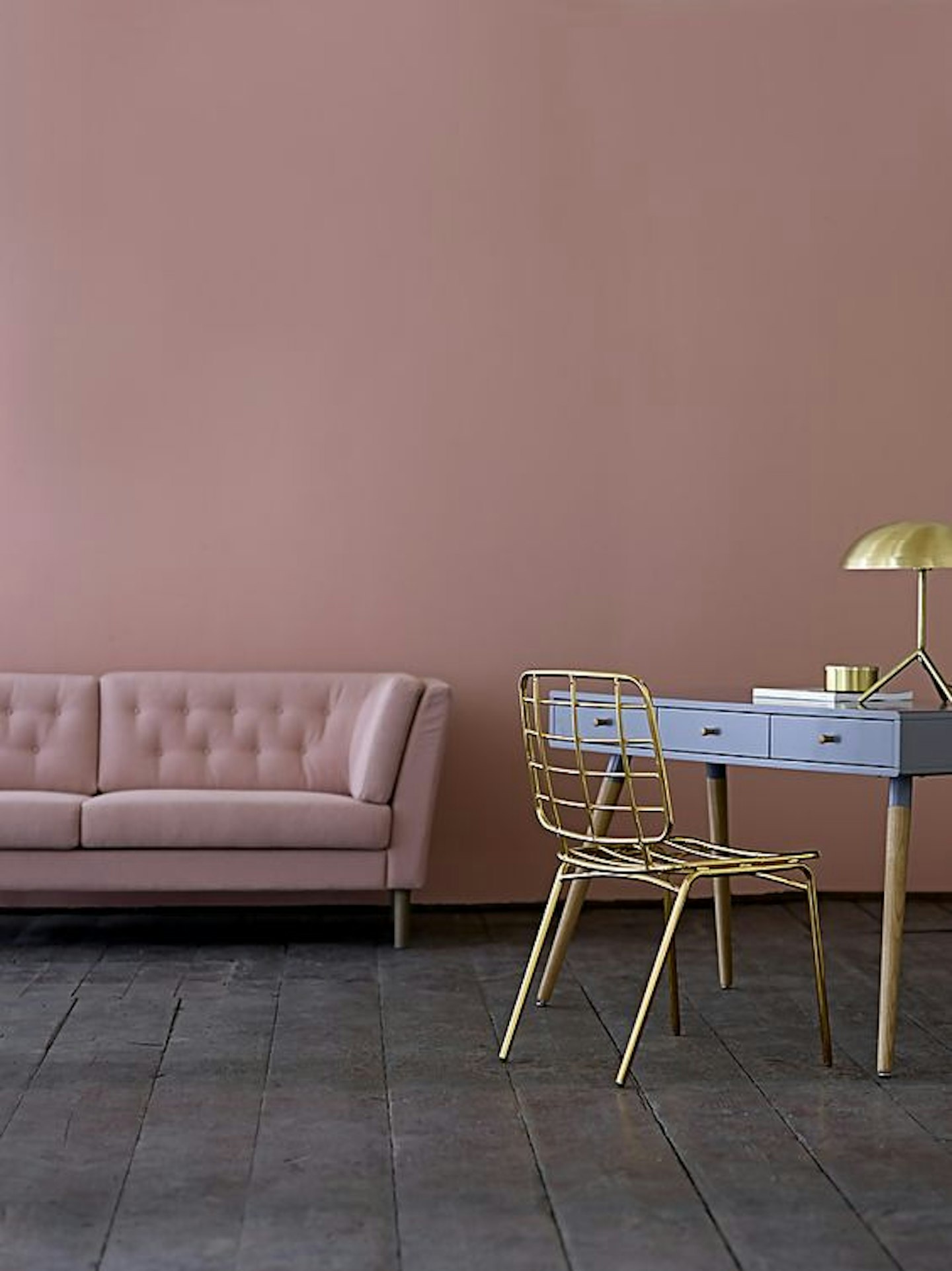 12 of 13
12 of 13pastel living room interiors inspiration
Metallic accents stand out against a millennial pink backdrop.
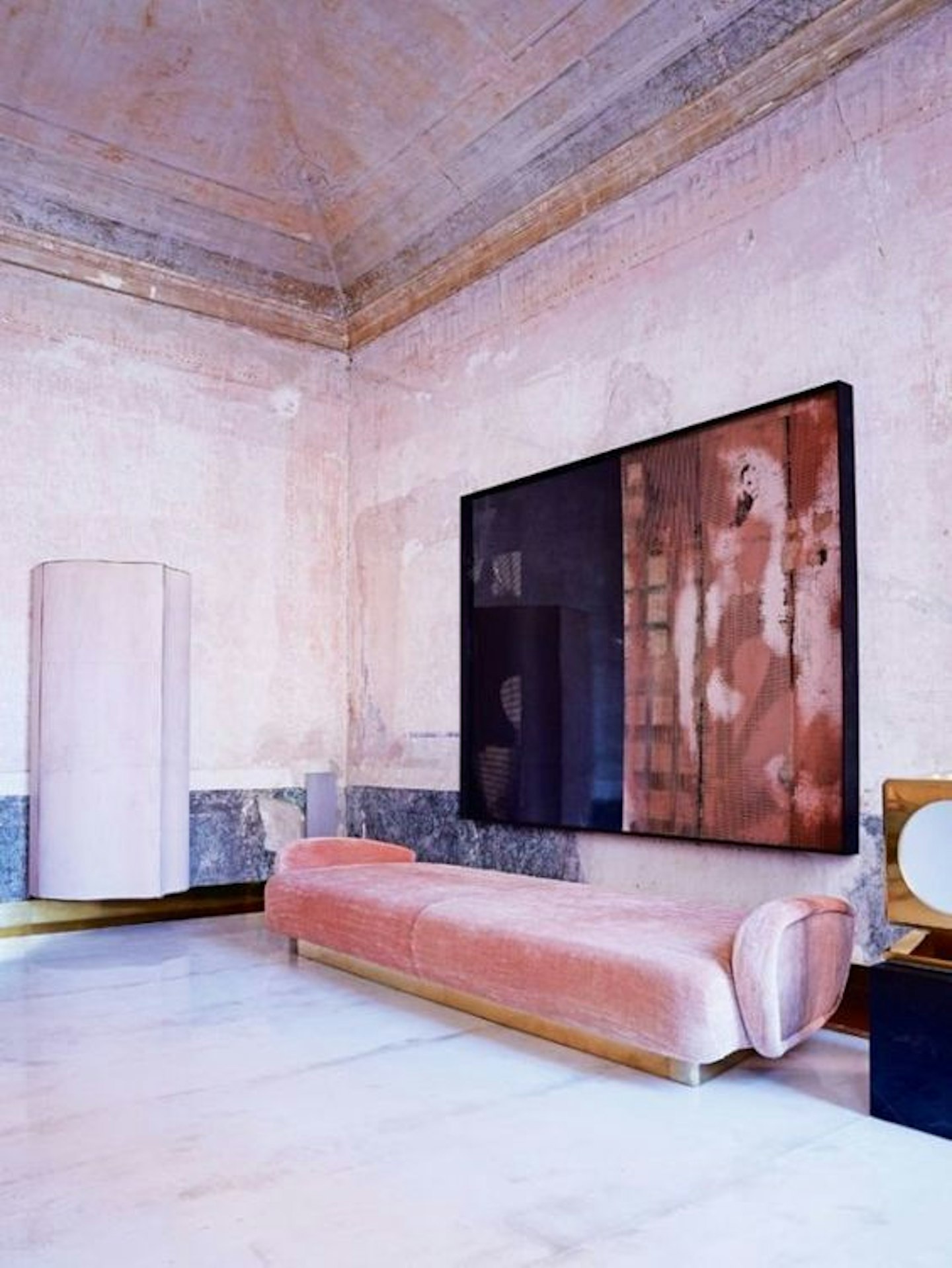 13 of 13
13 of 13pastel living room interiors inspiration
We can't all live in a pink palazzo, but we can dream__ of recreating these dappled walls...
Making your own curtains
Embarking on making your own curtains is no mean feat, and certainly requires prior experience of sewing (and no, your Year 9 textiles class probably doesn't count...) If you do decide to DIY, Elinor has a couple of pointers...
Calculating fabric quantities: 'There are good guides and calculators available online to help you with this,' she advises. Bear in mind that you'll need more fabric for a patterned curtain, 'so that the pattern matches correctly across the pair and where it is joined together,' and extra for hems and joining widths together.
The essentials: 'You'll need a sewing machine, a tape measure and an iron.'
Best for beginners: Elinor recommends pencil pleats (a traditional style where fabric is tightly gathered at the top) or wave curtains (a simple, ungathered style where the fabric falls fluidly) for curtain-making novices.
WATCH NOW: 17 Female Celebrities Who Changed Their Names For Fame
